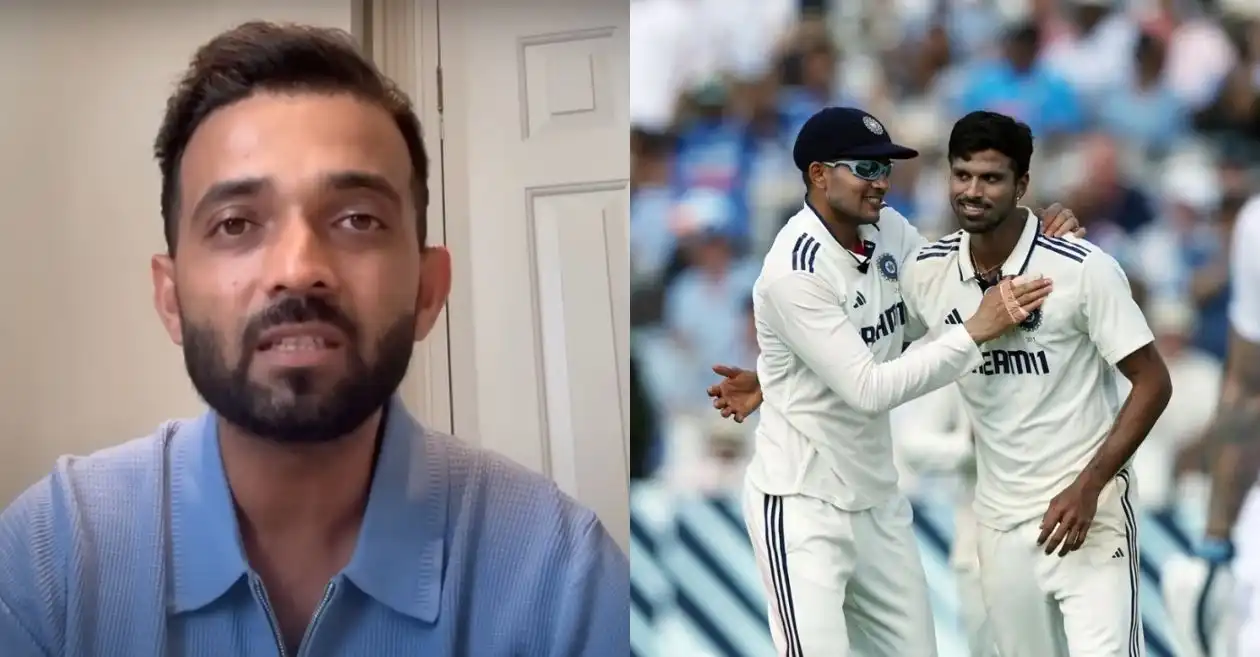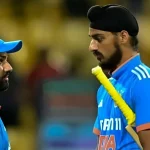India arrives in Manchester trailing 1–2 after a heart-rending loss at Lord’s. The third Test swung on fine margins—India’s lower-order resistance impressed, but again, questions around team selection and strategic execution emerged.
In this decisive phase, veteran Ajinkya Rahane has put forward a compelling tactical proposal: add a specialist bowler to the XI in place of a batting all-rounder. His argument, grounded in Test fundamentals, could be the blueprint for India’s path back into the series.
Moments Lost at Lord’s: Where Could India Have Pressed Their Advantage?
Rajneesh Misra columnist Rahane pinpointed key areas of concern following India’s narrow defeat:
-
India missed a chance to seize first-innings momentum, finishing level at 387 instead of surging ahead in their second innings.
-
Key batting failures on Day 4 & 5 left the chase of 193 feeling far too close for comfort.
Reflecting on the match posture, Rahane observed:
“While England bowled well, India missed a chance to post a strong total. Day 4 and 5 in England aren’t easy, and you’ve got to take 20 wickets to win. That means playing another specialist bowler.”
His advice comes at a time when India has fielded three specialist pacers (Bumrah, Siraj, Akash Deep) but supplemented batting depth with three all‑rounders (Jadeja, Washington Sundar, Nitish Kumar Reddy)—a formula Rahane suggests may require rethinking.
Rahane’s Tactical Pitch: Bowling Depth Over All-round Equity
Rahane’s message is clear: specialist strike bowlers matter more than batting depth when the pitch wears and wickets must tumble consistently. He emphasized:
-
The luxury of batting depth has been maintained—but at the cost of wicket-taking potency.
-
English Test cricket demands second-innings control, and that often requires two seamers and a strong spin duo.
-
Playing an extra frontline bowler, possibly via Kuldeep Yadav or another seamer, could improve wicket-taking chances significantly.
Given that India’s batting lineup is already capable, adding a specialist bowler is his strategic clarion call.
Insights from Experts and Indian Camp
Former spinner R. Ashwin concurred that India miscalculated at Headingley by overloading seamers when conditions merited spin. He suggested:
“A second spinner like Kuldeep Yadav could have helped break partnerships earlier.”
Similarly, many analysts and former cricketers across India Today, Firstpost, and CricketTimes publications have echoed Rahane’s view, suggesting dropping Nitish Kumar Reddy for a rotation specialist and favoring Kuldeep’s wrist spin or an extra seamer for balance and penetration.
Why England’s Conditions Demand Tough Calls
Old Trafford is known for seam movement early on, swing under cloud, and useful bounce. As innings progress and the ball softens, pace becomes less effective—but well-prepared spinners can exploit turn and lack of footmark smoothness.
Rahane—and many tactical minds—believe India’s attack rosters must adapt:
-
Day 1–3: Pace controls with movement and bounce.
-
Day 4–5: Spin pressure becomes critical.
-
Three seamers and two specialists (plus Jadeja and a wrist spinner) may deliver better wicket-taking balance than three seamers plus batting all-rounders.
Potential XI Switch: Who Comes and Who Goes?
If the selectors are swayed by Rahane’s vision, Indians may consider:
-
Dropping Nitish Reddy (used for batting depth)
-
Bringing in Kuldeep Yadav (as a spin specialist) or Prasidh Krishna/Shardul Thakur (pacing variety)
This aligns with Ashwin’s past recommendation for a spin-heavy approach in England when surfaces suit fruity bowling.
Such a move would shrink batting depth—but reward bowling attack diversity.
Can India Rewrite History at Old Trafford?
India have never won a Test at Old Trafford, and certainly never come from 1–2 down to win a series in England. The historical weight is heavy. Yet this Indian team has shown resilience—remember their impressive win at Edgbaston and twilight order fight at Lord’s.
For India to keep the series alive:
-
European conditions: exploit Assam of swing and seam early, and spin late.
-
Bat smarter in first innings, build bigger totals to relieve pressure.
-
Play bold selection moves, even at the expense of traditional balance.
Rahane’s call for extra bowling could turn the tide—if embraced.
Informed by News: Player Fitness & Selection Balance
Recent reports confirm Jasprit Bumrah, India’s premier pacer, is being managed carefully after back surgery. He’s expected to play this match given its importance, though assistant coach Ryan ten Doeschate emphasized a full load evaluation:
“We know we have him for one of the last two Tests… the series is on the line, so there will be a leaning toward playing him.”
Meanwhile, wicket‑keeper Rishabh Pant, nursing a finger injury at Lord’s, is expected to return to full role behind the stumps in Manchester—a boost for both batting and morale.
Additional turning points:
-
Experts felt India’s decision to rest Bumrah in the second Test (and overuse all-rounders) backfired.
-
Ashwin, in analysis post-Headingley, criticized reliance on Shardul Thakur and advocated for Kuldeep’s wrist spin instead.
Strategic Debate: Batting Depth vs Bowling Firepower
India’s core – Gill, Shubman Gill, Rohit, Kohli, Rahul, Pant—provides strong batting. The decision: retain all-rounders for balance or sacrifice one for more bowling muscle.
Rahane strongly favours the latter, arguing:
“Do we need the extra batting cushion, or do we need to ensure we take 20 wickets?”
In conditions where defending ~350 is possible but not enough, wicket-taking becomes the greater asset.
What’s at Stake: Beyond the Series Scoreline
-
A win gives England a winning 3–1 lead, ending speculation early.
-
A loss could ignite Indian resurgence, leading to a final showdown at The Oval.
-
Series outcome also impacts World Test Championship points, momentum for future tours, and confidence in player combinations.
Voices from Media and Reddit
Fan discussions echo tactical reasoning, with many suggesting:
“We should play four specialist bowlers, not rely on five all‑rounders.”
Community commentary often stresses the importance of wickets over extra batting options—a sentiment shared by Rahane and analyst voices alike.
Time for Tactical Courage
In the final analysis, test cricket is about taking 20 wickets, not just scoring runs. Rahane’s counsel—though off the field—offers clarity at a crucial juncture.
India must make tough decisions:
-
Should they cling to batting depth or prize bowling variety?
-
Can they adapt to English pitch cycles and extract value late?
-
Will dropping an all‑rounder of batting utility but limited bowling be justified?
If India can answer “yes,” Manchester may yet deliver a historic moment.
The 4th Test isn’t just another match—it’s a crossroads. Rahane’s suggestion isn’t just tactical noise—it’s a strategic pivot. How the team responds may define not only the series, but the future DNA of Indian Test selection in conditions like these.
Please check for information on the best betting sites in India – https://selectory.org/best-betting-sites/















